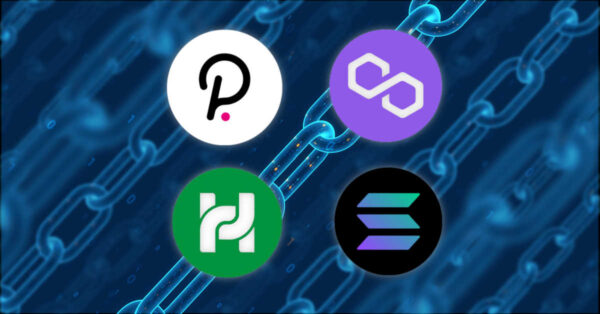


With the persistent issue of high gas fees on Ethereum not going away anytime soon, savvy investors and users are moving to Layer-1 competitors and Layer-2 solutions. Here’s a few to watch in the coming months.
Polygon – formerly known as Matic – is a Layer-2 scaling solution to Ethereum. Layer-2 scaling solutions facilitate faster and cheaper transactions by running sidechains or networks alongside the main Ethereum blockchain. Demand for these projects have grown with network congestion and high transaction costs on Ethereum.
DeFi integrations including decentralized exchange (DEX) SushiSwap, Aave, and Curve Finance have brought even more attention to Polygon. OpenSea, Decentraland and Aavegotchi are NFT communities now utilizing the Polygon network.
Ethereum’s scalability should improve with the sharding upgrade and bring down transaction fees. However, that likely will not happen until next year. Ethereum 2.0 will be 64 times more scalable, but we already need it at 1000 times what it is today.
So, I think it’s safe to say that Layer-2 solutions for Ethereum are here to stay and very much needed.
Solana is a Layer-1 blockchain competitor to Ethereum with the capacity to process more than 50,000 transactions per second. It aims to bring the best of both worlds of centralized and decentralized.
Currently there are around 900 validators – nowhere near as many as the thousands of nodes running Ethereum or Bitcoin, but much more than the 21 nodes on Binance Smart Chain.
Serum is a high-speed non-custodial decentralized exchange (DEX) built on Solana by FTX that runs an on-chain Central Limit Order Book (CLOB) updating every 400 milliseconds. This means high-speed low-cost limit-order trading and DeFi.
Learn more about Solana and Serum.
Huobi Eco Chain (HECO) is an open platform by Huobi Exchange that is similar to the Binance Smart Chain (BSC) of Binance Exchange. Just as BSC is utilizing $BNB for transaction fees, HECO utilizes $HT to operate. Since HECO was developed based on the Ethereum network, it also has similar characteristics to Ethereum.
HECO is yet another Ethereum competitor boasting a high-speed low-cost trading and DeFi experience. The soon to launch MAKI Swap aims to be to HECO as the AMM Pancake Swap is to Binance Smart Chain. Although very similar to BSC – HECO is easier to get started with and we’ll cover that in a future article.
Expect to see many Ethereum and Binance Smart Chain projects migrate and port over to HECO in the coming months.
Polkadot is the flagship project by Web3 Foundation that aims to enable a decentralized web where users are in control rather than large institutions and big tech that can violate our trust. It’s built to transfer any type of data across any type of blockchain.
Polkadot is an interoperability blockchain that connects other blockchains (or networks) together. Interoperability is essentially the ability to see and access information across various networks.
It is yet another competitor to Ethereum that can run higher transaction throughput because the transactions are spread across multiple computers, similar to parallel processing.
Polkadot’s co-founder Gavin Wood was also a co-founder of Ethereum.
In conclusion, once again, I must say more competition and collaboration will benefit both developers and users globally. The more tools we have in our toolkit, the better off we are at attaining the adoption of decentralization.

Share This Article
Join 10,000+ forward thinkers! Get crypto education in your inbox.